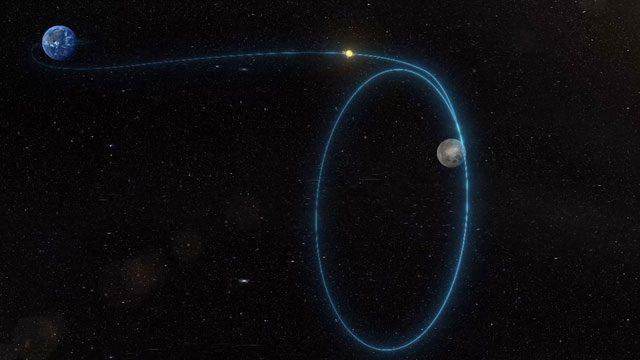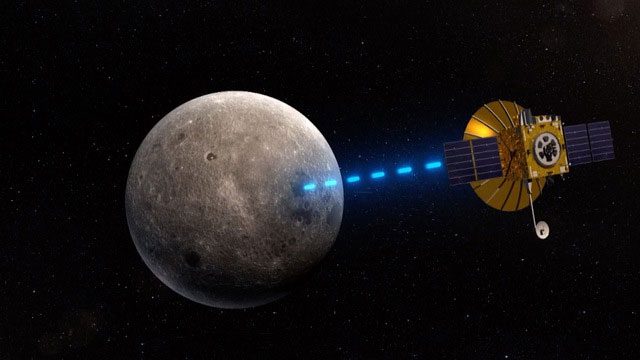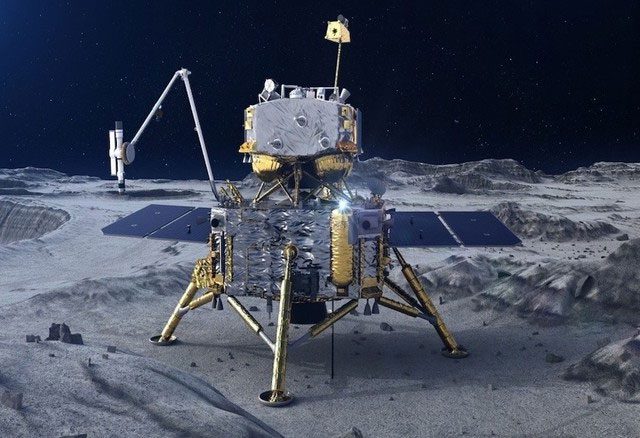What Else is China’s Chang’e-6 Doing in Lunar Orbit?
At 10:12 AM on May 8, 2024, after a week of high-speed flight and enduring the radiation from the “fire” of the Sun, Chang’e-6 finally reached the Moon and performed its first braking maneuver.
The main engine of Chang’e-6 was ignited, generating a thrust of 3,000 N. This single ignition lasted for 895 seconds, reducing its speed by 340 meters per second relative to the Moon. Subsequently, the spacecraft was successfully captured by the Moon’s gravitational pull, entering an elliptical orbit that lasts 12 hours around the Moon.
By May 10, Chang’e-6 entered a circular orbit at an altitude of 200 km around the Moon. This circular orbit serves as the operational orbit for Chang’e-6.

Thus, now that the Chinese spacecraft has arrived at the Moon, why does Chang’e-6 have to wait until June 2 to land on the lunar surface and is expected to complete the collection of 2,000 grams of samples by June 6, 2024?
So what will Chang’e-6 be doing from May 10 to June 2 during the next 24 days? While the Apollo 11 mission by the United States took a total of 8 days, 3 hours, 18 minutes, and 35 seconds to go from orbit to landing, allowing humans to set foot on the Moon for the first time (led by astronaut Neil Armstrong in 1969).
In reality, Chang’e-6 has a very busy work schedule while in lunar orbit. Before landing on the natural satellite’s surface, Chang’e-6 must complete three tasks:
1. Signal Reception Capability Check
This mission of Chang’e-6 involves landing and collecting samples from the far side of the Moon, so China relies entirely on the Queqiao-2 relay satellite to receive signals from the spacecraft back to Earth.
Moreover, this is the first lunar exploration mission conducted by Queqiao-2, so mission scientists need to check all technical conditions to ensure that when the spacecraft lands, it can easily communicate with Queqiao-2, which is in orbit at the time.

The diameter of the Queqiao-2 antenna reaches 4.2 meters, and the data transmission speed when positioned far from the Moon can exceed 1 Gigabyte per second. However, it has a drawback; the orbit of Queqiao-2 is not at Lagrangian point L2 but farther away.
This means that Queqiao-2 orbits the Moon in 24 hours, during which 20 hours can ensure communication between Earth and Chang’e-6; the remaining 4 hours fall into a “blind zone” as it is positioned too far from the Moon—up to 80,000 km—resulting in interrupted data transmission.
2. Observing the Moon’s Surface
The second task before Chang’e-6 sets foot on the Moon is to observe the lunar surface carefully.
The ultimate goal of Chang’e-6 is to excavate 2,000 grams of samples on an incredibly costly and challenging journey. The landing and sample collection site plays a very important role. The terrain at the landing site must not be too complex, as this could affect the safety of the landing.
In fact, China has publicly released a very detailed lunar map to the world, clearly marking mountain ranges and valleys.

The landing area of Chang’e-6 has been decided long ago. China has carefully selected over 10 candidate landing sites in the Southern Polar-Aitken Basin (SPA) on the far side of the Moon. The gigantic SPA basin was formed by a cosmic impact over 4 billion years ago and has a diameter of 2,500 km.
3. Scientific Research
The third and most important task is that Chang’e-6 will also conduct many other scientific research projects, with lunar sample collection as the primary mission.
Additional tasks conducted in lunar orbit include: high-precision surveys of the far side of the Moon’s topography; analysis of the Moon’s mineral and chemical composition; analysis of trace elements and isotopes from lunar rocks; assessing the impact of solar wind ions and cosmic rays on the Moon…

So far, China’s Chang’e-6 mission is considered the most complex unmanned lunar mission in history. For the first time in the world, a country has launched a probe to the far side of the Moon, aiming to collect 2,000 grams of material samples and bring them back to Earth for research.
Chinese space experts believe that China is making significant strides in its journey to conquer space. And Chang’e-6 is just one of four important steps in the country’s lunar exploration program.
Beijing’s further goal is to establish an International Lunar Research Station (ILRS) and subsequently collect Martian samples to bring back to Earth for research.


















































